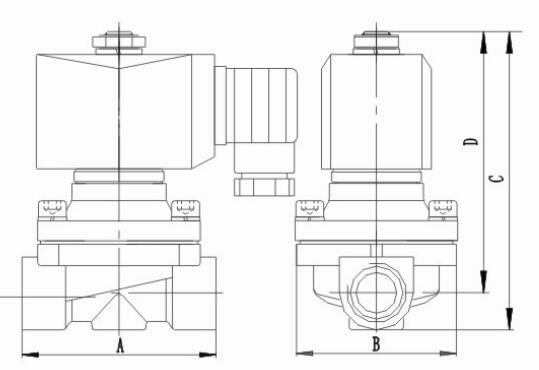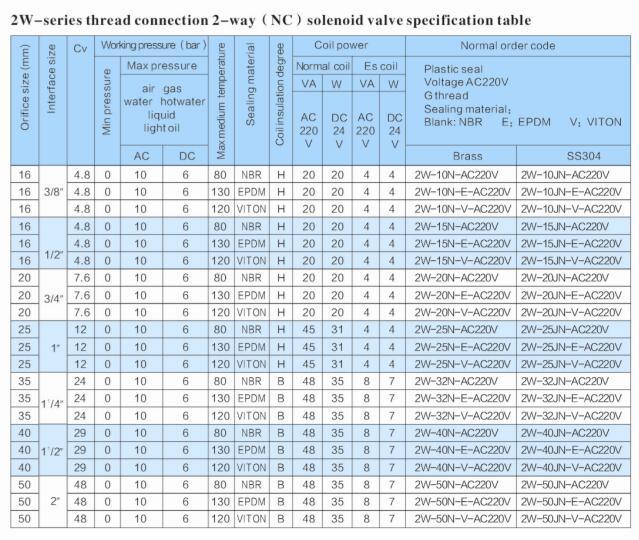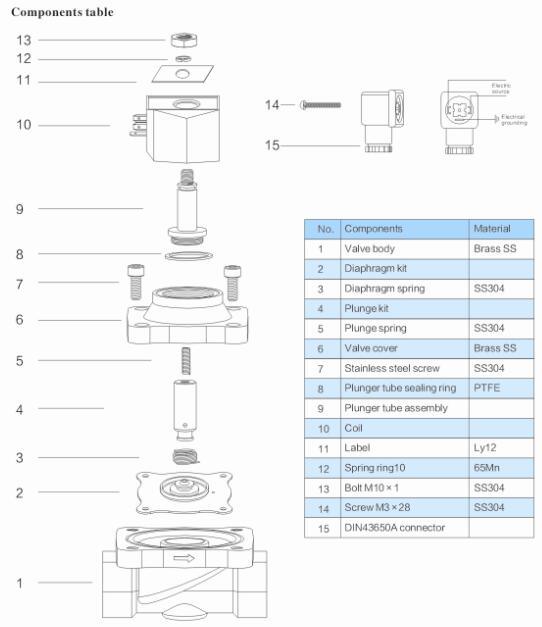Water Brass Solenoid Valve 3/8′′~2"
Road Roller, also known as soil compactor, is a kind of road repairing equipment. The road roller belongs to the category of road equipment in construction machinery. It is widely used in the compaction of high-grade highways, railways, airport runways, dams, stadiums and other large-scale engineering projects. It can roll sand, semi-cohesive and cohesive soil, Subgrade stabilized soil and asphalt concrete pavement layer. The roller is suitable for various compaction operations by the gravity of the machine itself, so that the layer to be rolled is permanently deformed and compacted. Road rollers are divided into steel wheel type and tire type. Road Roller Road Roller,Double Drum Road Roller,Vibratory Road Roller,Construction Road Roller Zhengzhou Dongfeng Mid-south Enterprise Co., Ltd. , https://www.cn-dfmtruck.com
2W-series thread zero differential pressure(NC)Â solenoid valve 3/8" ~Â 2"
Â
working medium:water,liquid,air,light oil(viscosity≤20cst)
medium temperature:-5 ~ 80ºC
working pressure:0 ~ 10bar (details see specification table)
working type:semi direct acting(NC) Â
Valvebody material:brass  SS304 Â
sealing material:NBR
interface:G thread   NPT thread         Â
voltage:AC220~240V  AC 110V  AC24V  50/60Hz   DC24V  DC12V   IP65  H degree(iron seal coil: IP54  B degree)
        DN10~25  AC 20VA  DC 30W   DN35~50  AC 45VA  DC 31W   Â
Options:
Rc thread   sealing material: EPDM  VITON  VMQ(-10~130ºC)
Digital timer   LED light connector    Â
Es low power energy saving coil( DN10~25 Â AC220Â V4VA Â DC24VÂ 4W Â Â DN35~50 Â AC220VÂ 8VA Â DC24VÂ 7W ) Â Â Â Â Â Â
Lead wire iron seal coil
Â
Â
2W-series semi direct acting(NC)solenoid valve drawing
Â
model
A
B
C
D
weight(Kg)
brass
SS304
2W-10N
68
56
117
104
0.9
0.8
2W-15N
68
56
117
104
0.9
0.8
2W-20N
73
56
123
106
0.9
0.9
2W-25N
100
74
135
114
1.5
1.4
2W-35N
110
85
154
129
2.2
2.1
2W-40N
120
90
162
134
2.3
2.3
2W-50N
154
115
185
151
3.0
4.0
Â
 
Â
 
                                  Â
                                                          Â
Â
Â
Â
Â
Â
Â
1. During operation, the roller should start before it can start to vibrate, and the internal combustion engine should be placed at medium speed and then adjusted to high speed.
2. Shut down first when shifting and reversing, and reduce the engine speed when shifting.
3. Vibration of the roller is strictly prohibited on solid ground.
4. When rolling the soft subgrade, it should be rolled 1 or 2 times without vibration, and then vibrated.
5. When rolling, the vibration frequency should be consistent. For the vibratory roller that can adjust you, the vibration frequency should be adjusted before operation, and the vibration frequency should not be adjusted without vibration.
6. The adjustment of the reversing clutch, shock clutch and brake should be performed after the main clutch is disengaged.
7. When going up or downhill, you cannot use the fast gear. In sharp turns, including articulated vibratory rollers, it is strictly forbidden to use fast gears when rolling in small turns.
8. The roller must not be engaged in vibration when driving at high speed.
9. When stopping, the vibration should be stopped first, and then the reversing mechanism should be placed in the neutral position, the transmission should be placed in neutral, and finally the handbrake control lever should be pulled up, and the internal combustion engine will stop after a few minutes of idling.
10. Other operational requirements should meet the requirements of the static roller.
â‘ Whether it is uphill or downhill, the layer under the asphalt mixture must be clean and dry, and the asphalt bonding layer must be sprayed to avoid the mixture from slipping during rolling.
â‘¡Whether it is rolling uphill or downhill, the driving wheel of the roller should be behind. This has the following advantages: when going uphill, the rear drive wheel can bear the driving force provided by the ramp and the machine itself, and the front wheel initially compacts the road surface to withstand the large shear force generated by the drive wheel When going downhill, the impact force generated by the roller's own weight is offset by the braking of the drive wheels. Only the mixture after the front wheel is rolled has the ability to support the rear drive wheel to generate shear force.
â‘¢ When rolling uphill, the roller should be stable in starting, stopping and accelerating to avoid excessively high or low speed.
④Before rolling uphill, the mixture should be cooled to the specified lower limit temperature, and then static pre-compression should be carried out. Vibration compaction is used only when the temperature of the mixture falls to the lower limit (120°C).
⑤ Downhill rolling should avoid sudden shifting and braking.
â‘¥When rolling downhill with a steep slope, a light roller should be used for pre-compaction, and then a heavy roller or vibratory roller should be used for compaction.